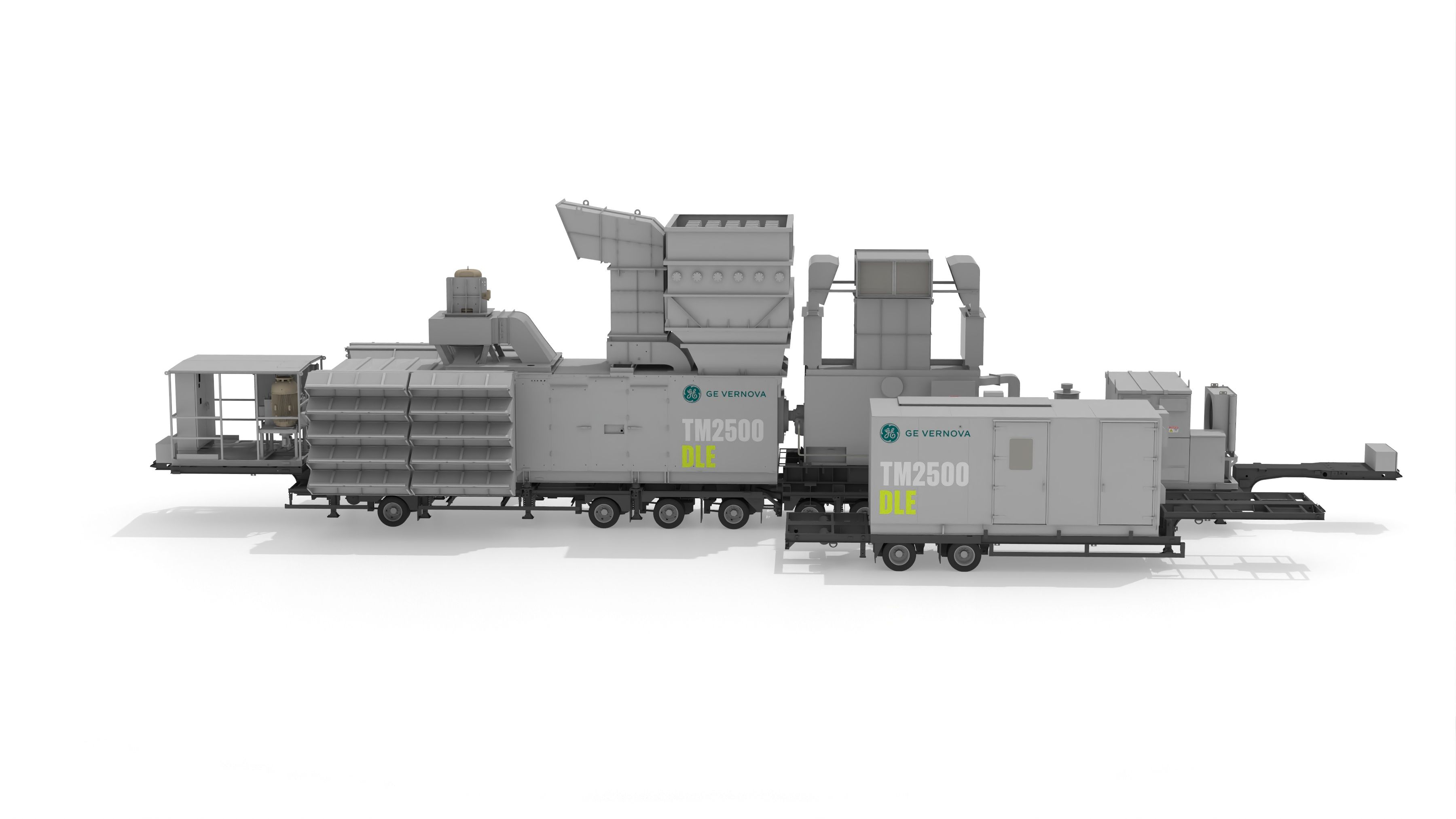GE Vernova Unveils Water-Free, Mobile Aeroderivative Gas Turbine
The TM2500 turbine will provide emergency power for utilities, municipalities, data centers, and other industries with its rapid start-up cycle.
GE Vernova launched the TM2500 dry-low emissions (DLE) aeroderivative turbine: a mobile, water-free 34-MW power-plant solution with up to 39% efficiency, lower NOx emissions and waste, and the ability to deliver power on and off the grid. It’s well-adapted to grid firming, construction, emergency power, and natural disaster response situations.
“The TM2500 DLE offers the same reliability as earlier models, but it is the first to operate without water and without any aftertreatment in emissions, as it produces lower NOx, CO, and particulate matter emissions compared to the previous mobile solutions and almost no methane slip,” said Clive Nickolay, CRO of GE Vernova’s Gas Power Aeroderivatives.
The compact TM2500 DLE operates on a two-trailer frame that enables easy shipping, on-site flexibility, and a 30-day lead time from contract to commissioning. It’s also fuel-flexible, burning natural gas, liquid fuel, or natural gas-hydrogen blends to counter fuel supply challenges or turbulent costs. Upon installation, the aeroderivative package starts up in 5 minutes, offering a nearly immediate response to power demand or grid stability fluctuations.
TM2500 mobile solution; image credit: GE Vernova

Mobile Power Trend
The growth of mobile power solutions is driven by:
- The increasing energy access gap as global population growth outpaces grid connections, with 76 million people living without accessible electricity. This gap occurs in regions with weak or no power grids.
- Utilities, municipalities, data centers, and other industries require more emergency power, as well as stable power, to grow and evolve.
- More countries and utilities are purchasing mobile technologies to bridge power gaps during electricity blackouts, low energy supply, and natural disasters/extreme weather events.
“The development of a decentralized energy network where electricity is generated close to, or at, the point of use also drives efficiency by reducing or eliminating energy losses from transmission and distribution, thus delivering both economic and environmental benefits,” said Nickolay. “With this new solution, we are committed to offering customers across the world greater fuel and operational flexibility, coupled with increased sustainability.”
More GE Vernova News
In late March 2025, Springfield City Utilities (CU) ordered three GE Vernova LM6000VELOX aeroderivative gas turbine units for the 100-MW McCartney Generating Station in Springfield, MO. The turbines will add 150 MW of reliable, flexible, and efficient electric generation capacity, reinforcing grid stability. GE Vernova’s aeroderivative units will burn natural gas with fuel oil/diesel as an emergency backup source. CU’s plant is expected to come online in 2027.
CU will require additional Planning Reserve Margin (PRM) in the coming years, primarily due to increasing electricity demand, aging power assets, and extreme weather events—PRM is the extra power capacity needed beyond expected demand, managing peak-usage reliability and unscheduled downtime. By 2026, CU will need 36% PRM during the winter months, up from 15%, to support Springfield’s electric load during intermittent or turbulent power events.
Also in March, GE Vernova and the Saudi Electricity Co. (SEC) completed gas turbine outage and maintenance operations at the Riyadh 8 power plant, a several-block facility with one block using four 7F gas turbines to generate approximately 500 MW. The outage was led by GE Vernova’s Gas Power One Field Services team and, in partnership with SEC, supported the reliability and efficiency of the plant’s power generation assets.